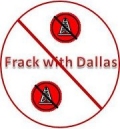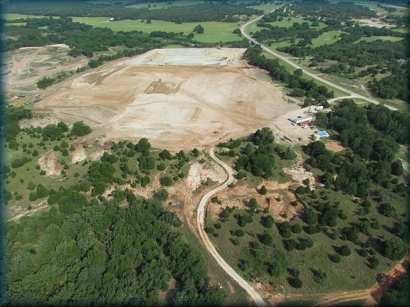 |
 |





 |








 |
    |
Noise and Light Pollution Issues Have you ever walked, ridden a bicycle, jogged, camped or just stood outside in a state park or other remote area at night? If you did, and that state park or other venue was within five miles of a major highway or thoroughfare, then you already know that traffic noise carries many miles through the night air. Typically, the ambient noise level will be about 65 decibels (dB), which is not all that loud, but it is loud enough to be clearly distinguishable, even while having a conversation. Adding vehicle noise raises the ambient level by a few decibels
Now, imagine that you own a farm or ranch in a remote, rural area far removed from cities, highways and industrial sites, where you can enjoy the sounds of crickets and cicadas, frogs and birds, the hooting of owls, the sounds of a running river or creek - some of the things that make the rural lifestyle so enjoyable. What you don't hear, and don't want to hear, are industrial noises that drown out the sounds of nature. Frac sand mining is a heavy industrial process that operates 24 hours a day, 7 days a week, year round without respect for neighbors near and far. A frac sand mining operation begins by bringing in heavy machinery to clear cut their mining site, stripping it of all vegetation, even though the trees and plants may have been habitat, provided food or been nesting grounds for animals and birds since time began. Tractors and graders tear down trees and bushes, dig up grasses and shrubs, load it all onto large trucks, all powered by smelly and polluting diesel fuel, to haul the debris off for disposal. They would just burn it if they could legally get away with it, but in most cases that is not allowed. So, they load it up and haul it out - at all hours of the day and night. Once the site has been clear cut it is ready to commence building the sand storage, washing, drying and handling facilities necessary to turn Mother Nature's artwork into crystalline silica sand for use in the hydraulic fracturing process that frees shale gas and oil for recovery by the oil and gas companies to whom they sell their sand. Like the clear cutting process, the construction phase will be a noisy and non-stop process. It will involve bringing in more heavy equipment, construction materials, storage tanks, sand filters, belt conveyors, sifters, separators, tools, manpower, diesel generators, water trucks and bright lights for nighttime opeation, most of which operate on motors powered by diesel fuel. And, if the mining site is a long way from accommodations, then structures in which workers can live on-site will be erected. Operations offices will surely be built on-site. After developing the site for mining operations to begin, the really heavy equipment is brought in. This will include huge earthmovers, front end loaders, sand hauling trucks and transportation vehicles for personnel who will work the mine unles they will be driving their own vehicles, in which case even more traffic and traffic noise will be present.  Frac sand mining site photo courtesy Save the Trinity Acuifer Depending upon the soil composition at the mining site, operations may begin by merely scraping the top layers and beginning the washing and filtering processes, but if the desired silica sand is buried under top soil and other sedimentary layers, then digging and/or blasting may be required to access the sand that is the object of the frac sand mining operation. Local laws and ordinances may, in some cases, limit the types of extraction methods used, but since most mines are in rural areas there are generally no such restrictions, and mining operations occur around the clock and around the calendar. The noise levels are far above the ambient level of about 65 db, and the closer you are to the mining site the louder it will be. You may have seen video or photos showing workers wearing ear protection, but in the event you have not seen those, OSHA requires ear protection in noisy industrial operations to protect workers. Such protection is usually mandated for long-term exposure exceeding about 80 db and for short-term exposure in excess of 90 db. The human threshhold of pain is 130 db. Once blasting and digging begins the mine operates continually with loud noises for as long as the mine exists. The sounds of those reverse gear horns that alert people that a vehicle is backing up carry for miles, and are heard day and night. And, as trucks are filled with the finished product they are driven away from the site. One mine site in Izard County, Arkansas states that it will run 70 trucks per day out of its mine, which also means that there will be 70 trucks coming back into the mine site each day. The Izard County site is a relatively small one at only about 200 acres. The Cooke County, Texas site will be about 1,400 acres in size, move some 500 tons of sand per day, and its permit application states that it will operate 24 hours per day, 7 days per week, 52 weeks per year! On-site and off-site truck noise will be nearly continuous, which means roadway destruction, flying dust and traffic in addition to the noise. Headlights will be glaring all night as those trucks traverse rural roads going up and down the highway to and from the mining site. Flood lights that are required for safe nighttime operation will light up the area like a football stadium, and some of that light noise will bleed off-site to disturb the serenity of darkness for nearby neighbors and wildlife. Stargazing will be adversely affected because of ambient light conditions that create a halo effect in the night sky. Nearby residents will lose the darkness that has always been there, and those close by will need to block light from penetrating their homes, especially bedrooms. Another adverse effect of worklights will be the negative impact it has on wildlife species, many of which require the cover of darkness for foraging, and others that do not sleep when there is light. It could result in a loss of wildlife from the general area as birds and animals seek a more serene environment that is necessary for their existence. None of these changes are natural or customary for areas where frac sand mining takes place. These are man-made changes that alter nature and the natural environment in ways that disrupt the morm for all species, human and animal alike, that live nearby. With an agenda to operate around the clock and around the calendar these frac sand mining operations will cause major changes to areas where they are located, and some of those changes will, inevitably, result in negative economic effects, as well as reducing the attraction of tourism and the solitude of rural lifestyles. Next: Threats to Fish, Wildlife and Habitat
|
Friends of the North Fork and White Rivers |